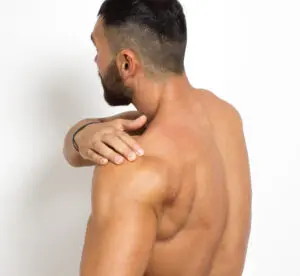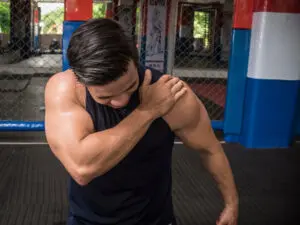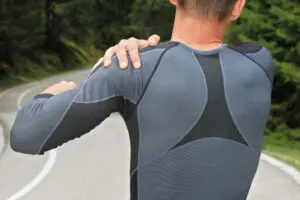Your shoulder is your body’s most complicated joint. The end of the collarbone, upper arm bone, and shoulder blade meet to form the shoulder joint. It’s prone to arthritis, tears, and tendonitis in the rotator cuff. Since it’s the most mobile joint and vulnerable to instability, here’s what you should know about shoulder instability.
Main Causes Of Shoulder Instability
Since the shoulder joint is so mobile and under constant stress, it is susceptible to dislocation. This occurs when the upper arm bone is forced out of the shoulder socket. It most commonly happens in the front of the shoulder.
Sudden trauma like an accident, playing football or hockey, slips and falls, or with excessive force placed on the shoulder can lead to a dislocation. The result is shoulder instability. It is common for a physician to manually place the shoulder back into the socket.
Types Of Shoulder Instability
A dislocation can be partial with the ball of the upper arm partially coming out of the socket known as subluxation.
With a complete dislocation the ball comes all the way out of the socket.
Some people with shoulder instability never have a dislocation. They have loose ligaments in their shoulder, and it can be part of their normal anatomy. Sometimes this is due to repetitive overhead motions like in swimming, playing tennis, or a baseball pitcher throwing the ball.
Multidirectional instability can happen with no history of dislocations. This can occur out of the front, out the back, or out of the bottom of the shoulder, and is usually due to naturally loose ligaments.
You Can Have Recurrent or Chronic Shoulder Instability
Once a shoulder has dislocated, it is vulnerable to repeat episodes where the shoulder is loose and slips out of place repeatedly. Once the ligaments, muscles, and tendons become loose or torn, dislocation can happen again.
Treatments For Shoulder Instability
Treatments usually begin with conservative ways to strengthen your shoulder using physical therapy.
Next steps include the following:
- Activity modification
- Medications
- Arthroscopic techniques
- Traditional surgery.
Surgical intervention is only recommended after other treatments have not proved successful.
Contact Dr. Samuel Koo at (425) 823-4000, or request an appointment online, for an evaluation if you have had dislocations in the past and think you may have shoulder instability.




